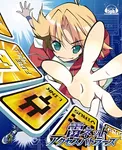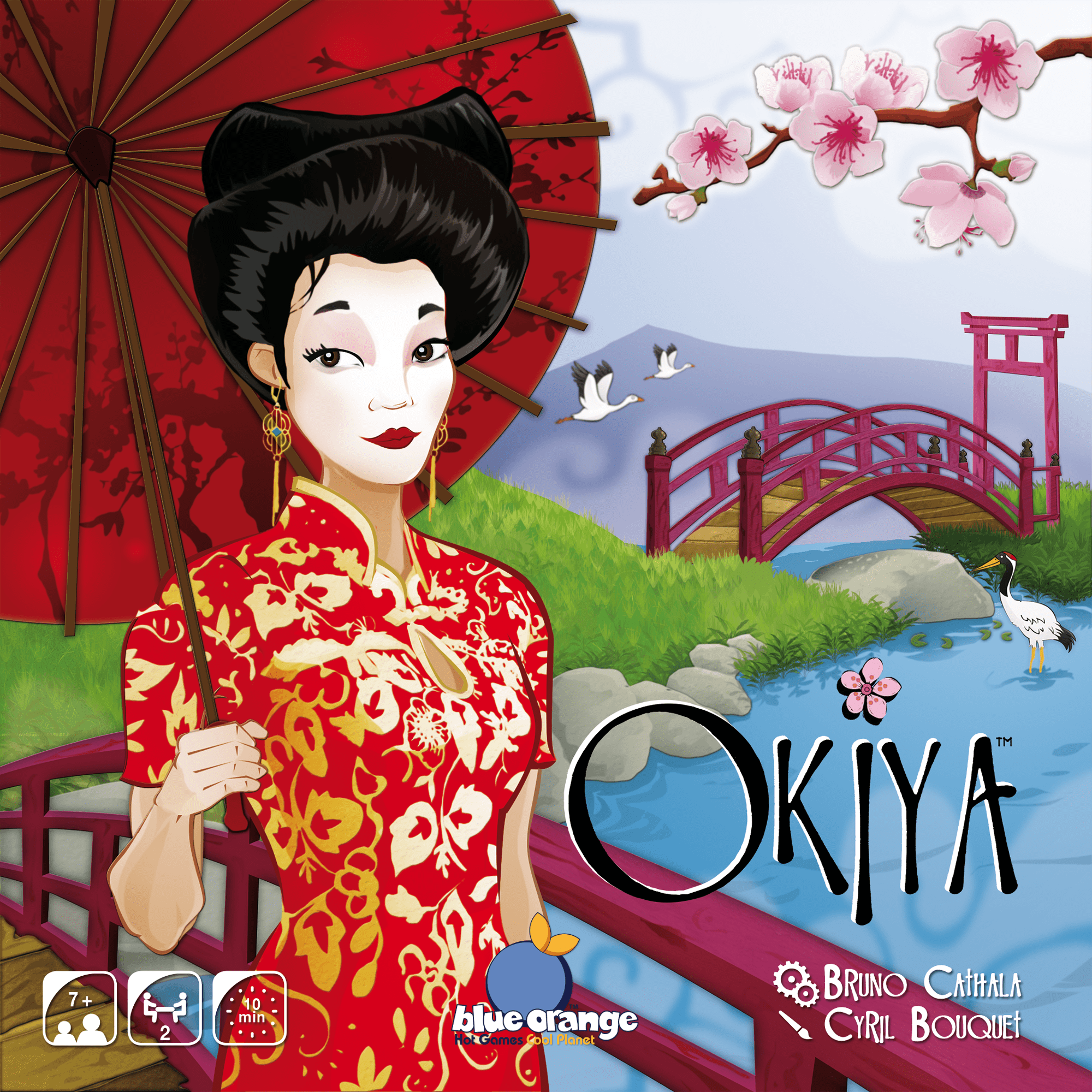Okiya (2012)
Speeltijd: 10
Min. Leeftijd: 7
Spelers: 2
Uitgever: Jactalea, Lifestyle Boardgames Ltd, Le Grand Massif, Blue Orange Games, Feelindigo, Swan Panasia Co., Ltd., Pegasus Spiele, Blue Orange (EU), Oxybul, Lautapelit.fi
Ontwerpers: Bruno Cathala
Kunstenaars: Cyril Bouquet
Mechanismen: Pattern Building
Min. Leeftijd: 7
Spelers: 2
Uitgever: Jactalea, Lifestyle Boardgames Ltd, Le Grand Massif, Blue Orange Games, Feelindigo, Swan Panasia Co., Ltd., Pegasus Spiele, Blue Orange (EU), Oxybul, Lautapelit.fi
Ontwerpers: Bruno Cathala
Kunstenaars: Cyril Bouquet
Mechanismen: Pattern Building
Beschrijving Tonen Opmerkingen Tonen Prijstrend
In Okiya, a.k.a. Niya,, each player tries to arrange her tokens to gain the favor of the emperor. Alternatively, you can prevent your rival from placing a token in the Imperial garden, showing that you have more control than your opponent.
To set up the game, shuffle the 16 tiles and arrange them in a 4x4 square; each tile shows one of four types of vegetation (maple, cherry, pine or iris) and one of four types of poetic symbols (rising sun, bird, rain or tanzaku - the small pieces of paper on which people sometimes write wishes).
The starting player removes one tile on the border of the square, sets this tile aside, then places one of her tokens in this space. The opponent must then do the same thing, but can choose from only those tiles that depict the same type of vegetation or poetic symbol shown on the tile first set aside. Play continues, with each set-aside tile determining where the next player can go until:
A player forms a line with four of her tokens in any direction,
A player forms a 2x2 square with four of her tokens, or
A player chooses a tile which doesn't allow her opponent to place a token.
In any of these cases, the player has won the game. A match can be a single game, a "best of three" series, or a point-based match, with the winner of a game earning as many points as the number of tiles remaining in the grid when she wins; in this case, the player who first collects ten points wins the match.
To set up the game, shuffle the 16 tiles and arrange them in a 4x4 square; each tile shows one of four types of vegetation (maple, cherry, pine or iris) and one of four types of poetic symbols (rising sun, bird, rain or tanzaku - the small pieces of paper on which people sometimes write wishes).
The starting player removes one tile on the border of the square, sets this tile aside, then places one of her tokens in this space. The opponent must then do the same thing, but can choose from only those tiles that depict the same type of vegetation or poetic symbol shown on the tile first set aside. Play continues, with each set-aside tile determining where the next player can go until:
A player forms a line with four of her tokens in any direction,
A player forms a 2x2 square with four of her tokens, or
A player chooses a tile which doesn't allow her opponent to place a token.
In any of these cases, the player has won the game. A match can be a single game, a "best of three" series, or a point-based match, with the winner of a game earning as many points as the number of tiles remaining in the grid when she wins; in this case, the player who first collects ten points wins the match.
We hebben momenteel geen prijsgegevens voor dit spel.
Dit spel wordt momenteel niet verhandeld op de marktplaats:
Dit spel staat momenteel niet op de marktplaats. Als u het uwe wilt verkopen, voeg het dan toe aan de marktplaats.
Marktplaats
Gerelateerde Spellen
ag.gameitem.lastUpdated: 2025-06-09 02:28:39.668
















